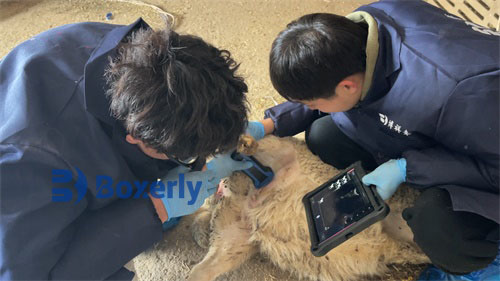Veterinary B-ultrasound diagnosis: Veterinary B-ultrasound is a type of sound wave that propagates mechanical vibrations in elastic media. The sound waves that can be heard by the human ear with frequencies between 16-20000 Hz are called audible sound waves, while the sound waves with frequencies higher than 20000 Hz that cannot be heard by the human ear are called ultrasonic waves.
Animal B-ultrasound diagnosis distinguishes different tissues based on the differences in acoustic characteristics of various animal tissues. According to acoustic characteristics, animal tissues can be roughly divided into two categories: soft tissues and bones. The acoustic resistance of soft tissues is similar to that of water, while bones are solid. The sound velocity, acoustic impedance, sound absorption coefficient, attenuation coefficient, etc. of animal tissue reflect the basic acoustic characteristics of animal tissue, and the acoustic characteristics of different animal tissues are different.
When ultrasound is transmitted within animals, reflection and refraction occur at the interface between two different tissues. When transmitted within the same tissue, scattering occurs due to the unevenness of animal tissue. Ultrasound generates different reflections and scattering through different organs and tissues, and the instrument uses these reflection and scattering signals to display the subtle structure of the organ interface and internal tissues as a diagnostic basis.
At present, most ultrasound diagnostic instruments use ultrasound pulse echo technology, which amplifies and displays the received echo signals on the display screen. According to different display methods, Veterinary ultrasound can be divided into veterinary A-scan and veterinary B-scan, both of which have become indispensable equipment in the aquaculture industry.








